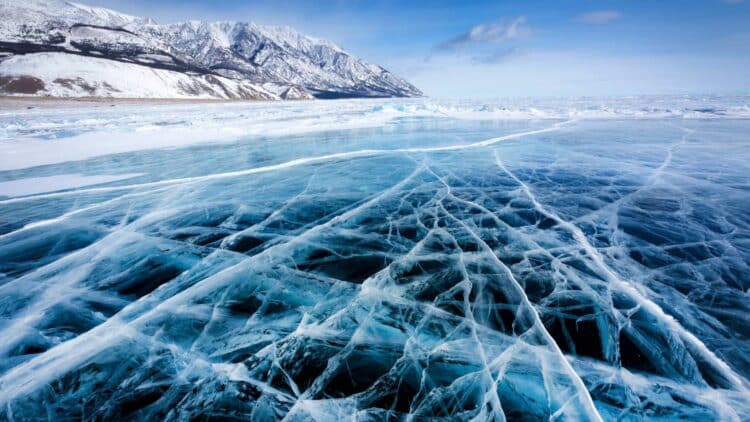What would you say if we told you that ice, that cold, unchanging element, is not a passive freezer, but a chemical reactor? You would probably call us crazy, right? For decades, we have been taught that ice slows down chemical reactions. And it makes sense: the colder it is, the slower the molecules are, and this slows down chemical action. Under this assumption, scientists believed that these expanses of ice and permafrost acted as preservatives, halting the complex chemistry of nature.
However, pioneering research led by Umeå University in Sweden—and published in the journal PNAS—has just shown that this belief is incorrect. Not only does ice not stop certain chemical reactions, but it can actually accelerate them… especially when it comes to the release of certain materials, such as iron from minerals.
Behind this phenomenon lies the explanation for the mysterious change in Arctic rivers, which in recent years have been turning a striking rust color.
Demystifying Ice
The secret of ice also lies in a mechanism called “freezing concentration” (also known as “cryogenic concentration”). To understand this, imagine that ice is an extremely selective host when it comes to what it tolerates from its guests. It only allows perfect people into its home. If water contains salts, minerals, and organic acids, when it begins to freeze, ice crystals form with pure water, while during the solidification process, all “impurities” are expelled from the crystalline structure. It would be very similar to watching a sponge squeeze out liquid.
These impurities are trapped in micro-pockets within the ice in veins of liquid water that are interspersed between the microcrystals and ice. In these tiny spaces, the volume of water is negligible, but the amount of trapped substances is the same as in the original water. This causes the concentration of reactants and acidity to increase exponentially, making that water deposit extremely acidic and reactive.
This is completely counterintuitive; researchers confirmed that ice at -10 °C dissolved more iron from the mineral than liquid water at 4 °C. These relationships remained active even at least 30 °C, a range where it had previously been believed that chemistry would be particularly paralyzed.
The Experiment and Raw Materials
Being good scientists, the researchers wasted no time in attempting to replicate the natural conditions of Arctic soil. To do so, they focused on two common substances: the mineral goethite, a form of iron oxide abundant in soil and rocks; and oxalate, an organic acid found naturally in plants and living organisms.
When they froze the mixture of goethite and oxalate, they observed that the extreme concentration of oxalate caused by freezing accelerated the dissolution of goethite, releasing soluble iron. This explains the orange color of Arctic rivers and lakes. Once this soluble iron is released into the environment, it encounters oxygen, causing it to react quickly, oxidize, and turn the water a bright reddish-orange color. This is exactly the same as the oxide we see on corroded metal.
The Arctic Impact
Most of these iron minerals and organic acids are trapped in the Perma Frost, the permanently frozen soil of the Arctic. As global temperatures rise, the Arctic experiences an increase in the frequency and duration of freeze-thaw cycles.
This cycle amplifies the effect: when the ice melts, it releases the oxalate that was trapped; when it refreezes, the oxalate is concentrated and there is more iron, repeating the process and releasing more minerals. It is a vicious chemical cycle driven by climate change. In addition to iron, the process also mobilizes organic carbon trapped in the permafrost for thousands of years. This could potentially affect the global carbon cycle.

